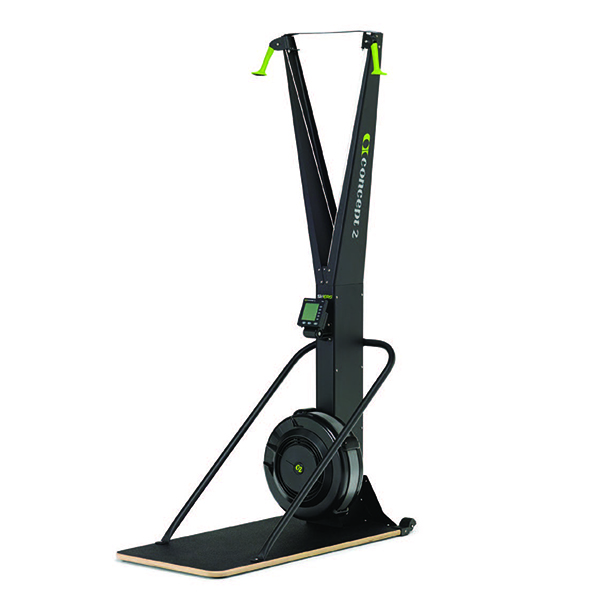WRITTEN BY WOODSIDE DIRECTOR OF TRAINING, JOHN BEANE
Over the coming months we will be covering several performance concepts to help enhance your experience at Woodside by deep-diving into our state-of-the-art equipment and providing guidance for results-driven programming.
This month we are talking about cardio programming or more specifically energy systems development (ESD). It can seem a bit overwhelming to think that every cell in your body requires an unrelenting supply of energy to keep you alive. Energy systems are the way the body meets these energy demands, and conditioning a.k.a. cardio is directly related to energy production and expenditure. Traditionally when we hear the term cardio, we think about long sessions in which our heart rate is elevated for a set time or distance. Often performed outdoors, on treadmills, bikes or amidst a Netflix binge on an elliptical. There are several important health benefits to this type of cardio, often called steady state or long, slow duration which we will get into. However, there are more options when it comes to cardio that fortunately can also be great for health, time efficiency and novelty.
The conversation around ESD can become quite lengthy and extremely dry. For the purposes of this format, we will keep it brief and as digestible as possible. Your body uses two primary energy pathways, Aerobic (requiring oxygen) and Anaerobic (without oxygen). Within these two primary pathways there are three main energy systems used in programming. None of these energy systems are exclusive to each other, however with the correct amount of intensity, time and rest periods we are able train them independently for the primary adaptation we are seeking.
The three systems and a quick definition are.
- Anaerobic Alactic (ATP-CP) Energy System: used in activities that require high amounts of short duration intensity and acceleration
- Anaerobic Lactic (Glycolytic) Energy System: used in activities that require high to medium intensity
- Aerobic Energy System: used in activities that require low intensity and long duration endurance
We warned you this could get dry! To put these into context think Anaerobic Alactic equals a 100 meter sprint, Anaerobic Lactic equals a 400 meter run, and Aerobic equals a 1500 meter run. Even simpler, Anaerobic Alactic equals I can’t talk while doing this, Anaerobic Lactic equals I can talk but I need breaths in between words or sentences and Aerobic equals I can talk about Travis Kelce and Taylor Swift the whole time and drive my workout partner nuts. As we mentioned earlier the three systems are not exclusive to each other and there is a lot of overlap. There are benefits to training each but ultimately your own personal goal will dictate in which system you spend the most time.

The SkiErg by Concept 2 is an excellent tool to train all three energy systems to improve your cardiac output. The SkiErg was originally designed for cross county skiers but has become an integral part of general population cardiovascular training, allowing the user to get the performance benefits of cross-country skiing without the technical skill and risk of bear attacks. It is a great choice for users at all levels, but there are a few basics we’d like to cover before you begin your training. We’ve included a gif showing correct form and sample programming to help get you started but as always if you would like further assistance, please let one of our Trainers know and we will answer all your questions.
- Set up 18-24 inches from the Flywheel with feet shoulder width apart.
- Arms should be bent at 90 degrees.
- The “drive” starts by hinging at the hips before the knees bend.
- Aim your thumbs toward your thighs and do not let the wrists bend or the arms fully extend.
- You may come up on your toes to allow for a smooth transition into the next pull.
SAMPLE WORKOUTS
Sample Anaerobic Alactic Session on the SkiErg
10:90
- 10 rounds for a total time of 16 minutes and 40 seconds.
- 10 second sprint followed by 90 seconds of complete rest.
- Your goal is to hit as many meters on the 10th round as you did on the 1st round, which will indicate your recovery between rounds is sufficient.
Sample Anaerobic Lactic Session
60:30
- 12 rounds for a total time of 18 minutes.
- 60 seconds of work followed by 30 seconds of complete rest.
- Similar to the Alactic session keep an eye on the total meters of your first round and make sure you’re hitting withing plus or minus 10 meters for the subsequent rounds.
Sample Aerobic Session
2000 Meters for Time
- Total time of the sessions depends on your tolerance of cardio misery (kidding…kind of).
- The 2000 meters for time session is all about pace. Be mindful of your avg/500 meters throughout the session to make sure you’re staying on pace. Large fluctuations either mean you’re out of the gates to quick or you can increase effort.
- This is often used by our trainers as a cardio testing measure so make sure to record your time and repeat the session every four weeks to gauge the success of your program.
*Concept2 recommends starting your training on the “Just Ski” Program with the damper setting at 3.

Our Training team can help you incorporate the SkiErg into your workout routine. To learn more click here or email us.


